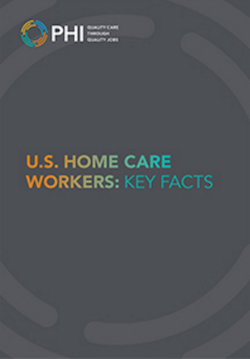
Improving the quality of jobs — pay, benefits and working conditions — in long-term care will be critical to attracting and keeping workers to meet demand in a tightening labor market, according to the Paraprofessional Healthcare Institute, which released two reports on Tuesday.
“Increasingly, we hear from providers that recruitment and retention of a stable, skilled workforce is the biggest challenge they face,” said PHI President Jodi M. Sturgeon.
The two reports released Tuesday cover home care workers (including personal care aides, home health aides and nursing assistants) and nursing assistants in nursing homes.
PHI found that the current median hourly wage for workers employed by home healthcare agencies, which is $10.11, is slightly less than the inflation-adjusted wage of a decade ago, when there were less than half as many such workers. Home care will create more than 600,000 new jobs in the next decade, more than any occupation in the U.S. economy, according to PHI.
A second PHI report found that the median hourly wage for nursing assistants at nursing homes is $11.87, meaning that the average nursing assistant earns $19,000 annually. Additionally, according to PHI, nursing assistants experience job-related injuries at more than three times the rate for the average U.S. worker, and more than half leave their jobs annually.
Health insurance coverage for both home care workers and nursing home nursing assistants has increased by 14% and 11%, respectively, under the Affordable Care Act, according to PHI. One in four home care workers and one in six nursing home nursing assistants, however, do not have insurance, compared with fewer than one in 10 workers nationwide, the organization said.
PHI said it expects to release data analyses on demographics, employment characteristics and demand for direct care workers annually.



